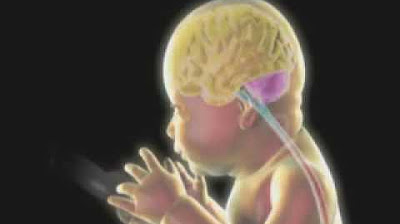Kenali dan Cegah Cacat Lahir Spina Bifida
Summary
TLDRThis video highlights the critical topic of spina bifida, a birth defect caused by incomplete closure of the neural tube during the first four weeks of fetal development. The video emphasizes the importance of folic acid intake before and during pregnancy to prevent spina bifida, along with other risk factors such as diabetes, obesity, and genetic predisposition. It explains the varying severity of spina bifida, from mild to severe, and the potential symptoms, which can range from developmental delays to seizures. The video stresses early diagnosis, treatment options like surgery, and ongoing support like physical therapy and the use of assistive devices for affected children.
Takeaways
- 😀 Spina bifida occurs when the neural tube, which forms the spine, doesn't close properly during the early stages of pregnancy.
- 😀 Incomplete closure of the neural tube can lead to a congenital condition called spina bifida, which can range from mild to severe.
- 😀 Risk factors for spina bifida include folic acid deficiency, maternal diabetes, obesity, and genetic factors.
- 😀 Folic acid plays a critical role in the development of the neural tube, and its deficiency during pregnancy increases the risk of spina bifida.
- 😀 Symptoms of spina bifida vary from mild signs such as abnormal hair growth or skin dimples to severe complications like seizures and impaired consciousness.
- 😀 Early diagnosis is essential, with health professionals performing spinal checks at birth to identify any abnormalities.
- 😀 Severe cases of spina bifida may require surgery and long-term rehabilitation, including mobility aids like wheelchairs or crutches.
- 😀 Mild cases can be managed with regular observation and physical therapy to improve mobility and development.
- 😀 Preventive measures for spina bifida include proper prenatal care and the consumption of folic acid-rich foods such as spinach, beans, eggs, and broccoli.
- 😀 Regular prenatal check-ups with healthcare providers are crucial for early identification and intervention in cases of potential birth defects like spina bifida.
Q & A
What is spina bifida, and how does it develop?
-Spina bifida is a birth defect that occurs when the neural tube, which forms the baby's spine, does not close completely during early pregnancy. This can cause physical deformities, neurological issues, and developmental delays.
At what stage of pregnancy does spina bifida typically develop?
-Spina bifida develops during the first four weeks of pregnancy when the neural tube is supposed to close completely.
What are the potential symptoms of spina bifida?
-Symptoms can vary, including no symptoms at all, developmental delays, urinary and bowel dysfunction, seizures, and even consciousness loss in severe cases.
What factors contribute to the risk of spina bifida?
-Risk factors for spina bifida include a deficiency of folic acid during pregnancy, maternal conditions like diabetes, obesity, and genetic factors.
How can folic acid deficiency affect the development of spina bifida?
-Folic acid is crucial for the proper development of the neural tube. A deficiency can impair the neural tube’s closure, increasing the risk of spina bifida.
How can spina bifida be detected in a newborn?
-Spina bifida can be detected by healthcare professionals who examine the newborn's spine for abnormalities such as bulging or unusual markings on the back.
What types of medical professionals are involved in the treatment of spina bifida?
-Treatment for spina bifida may involve pediatricians, pediatric neurosurgeons, neurologists, rehabilitation specialists, and growth and development doctors.
What are the treatment options for severe spina bifida?
-Severe cases of spina bifida often require surgery, and the child may need assistive devices such as a wheelchair or cane as they grow.
Can spina bifida be prevented, and if so, how?
-Spina bifida can often be prevented by ensuring that women take sufficient folic acid before and during pregnancy. Foods rich in folic acid, like beans, eggs, spinach, broccoli, and papaya, can help.
How does early detection and proper prenatal care help in managing spina bifida?
-Early detection through prenatal care and regular check-ups can help identify potential birth defects early on, allowing for better preparation and treatment for the child after birth.
Outlines

This section is available to paid users only. Please upgrade to access this part.
Upgrade NowMindmap

This section is available to paid users only. Please upgrade to access this part.
Upgrade NowKeywords

This section is available to paid users only. Please upgrade to access this part.
Upgrade NowHighlights

This section is available to paid users only. Please upgrade to access this part.
Upgrade NowTranscripts

This section is available to paid users only. Please upgrade to access this part.
Upgrade NowBrowse More Related Video
5.0 / 5 (0 votes)





